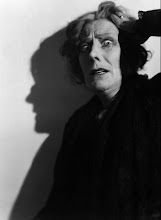♦ Immerse yourself in the rich history and traditions of carnival.
♦ See firsthand the intricate designs and artistry of majestic crowns, scepters and robes of Mardi Gras monarchs.
♦ Discover the art of costume design and float construction.
♦ View videos of parades and balls.
♦ Witness the pomp and pageantry of past coronations.
♦ Browse a pictorial gallery of historical photographs dating back to 1886.
♦ Experience a behind the mask view of the street party by climbing aboard a rocking float.
♦ Become a costumed youth rider in the Little Mystics Den.
About the Museum
General Information
Admission:
Adults: $5.00
Children 12 and under: $2.00
Under age 3: No charge
Accessibility:
The museum is wheelchair accessible on 2 of the 3 levels.
Hours:
Open: Monday, Wednesday, Friday, Saturday
9:00 am to 4:00 pm
(Last tour begins at 3:00 pm)
Closed: Tuesday, Thursday, Sunday
(*Private tours of 50 or more may be accommodated with advance arrangements.)
Holiday Hours 2009: The museum will be closed Memorial Day (May 25), Independence Day (July 4), Labor Day (September 7), Christmas (December 25-26), and New Years (December 31 and January 1).
Parking:
Complimentary parking at the on-site lot
Group Tours:
Group tours are welcome. Reservations are requested for groups of 10 or more. Groups can explore the museum at their leisure or opt for a docent guided tour.
School Tours:
School tours are tailored to the age of the students and to a particular area of study upon request. The Mobile Carnival Museum is located in the historic Bernstein-Bush house, and the mystical Den is the former carriage room of the house.
©2008 Mobile Carnival Museum - All Rights Reserved
355 Government Street - Mobile, Alabama - Telephone 251-432-3324
Text from http://www.mobilecarnivalmuseum.com/













